
The best time to see it is undoubtedly at night. For, when night falls, The Temple of Luxor becomes even more spectacular; more mystical in its grandeur than by the light of day. Caressing the heavens, its stonework glows as it absorbs the last of dusk’s golden hue. And, when the skies darken to a rich shade of navy blue, the moon perches itself atop a column to illuminate the temple’s avenues in ethereal light.
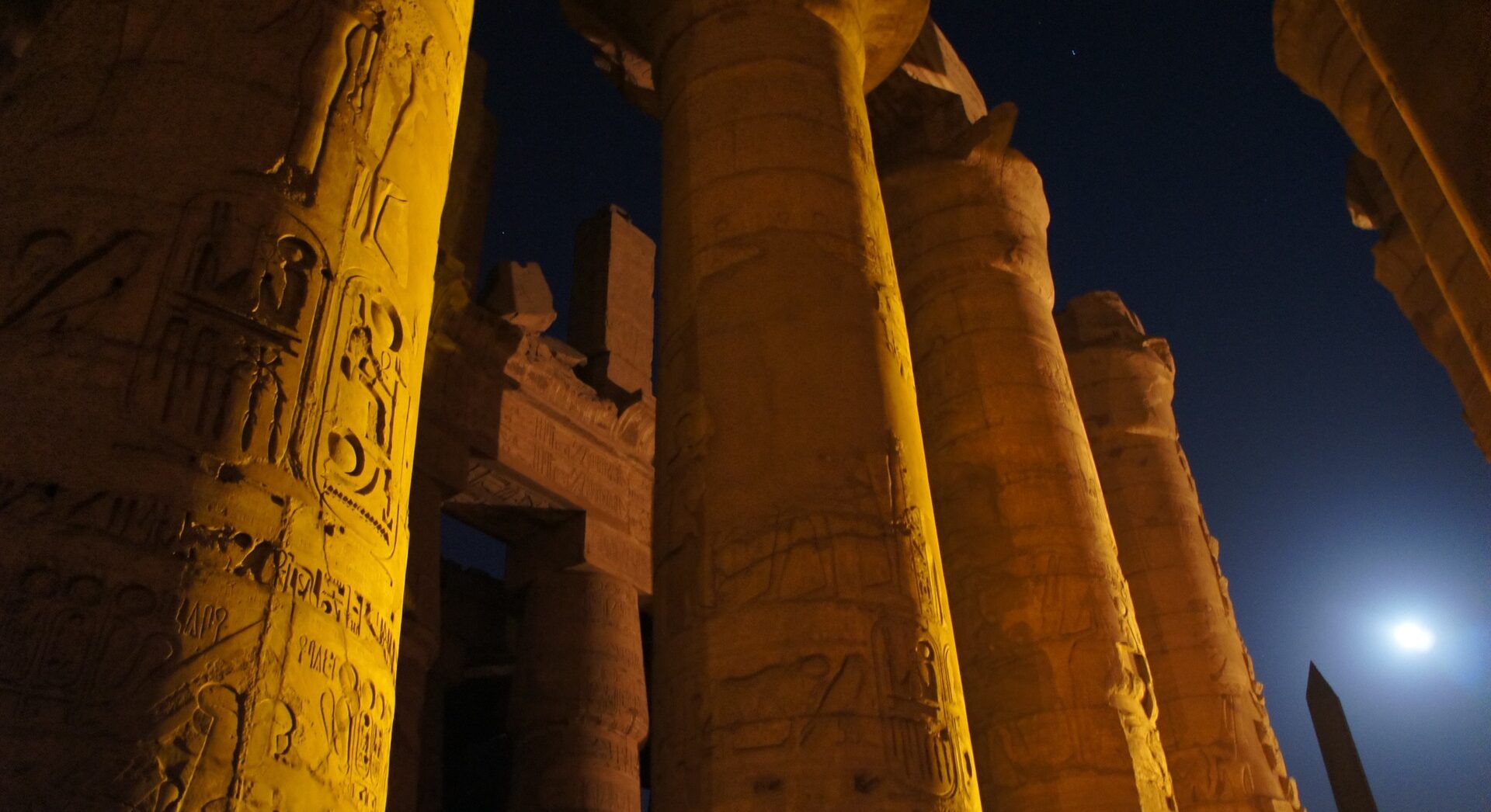
Stood before the sacred complex, one almost doesn’t feel worthy to enter. The site was once a place of gathering for only the most revered members of Egyptian society – pharaohs, priests, and the Gods. Yet here you are, prepared to make an entrance; a miniature figure beside the seated statues of Pharaoh Ramses II adorning either end of the grand pylon gateway.
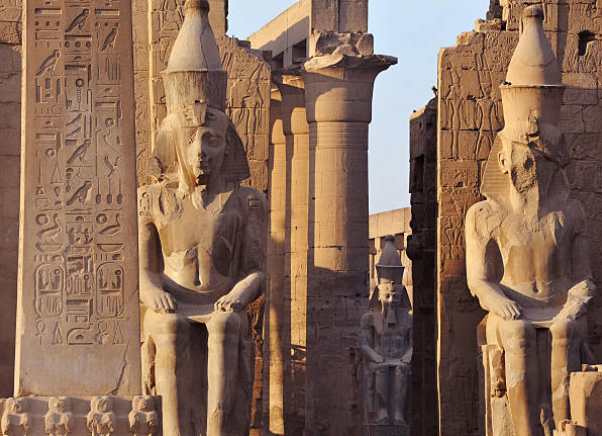
When one thinks of Egypt, the famed Pyramids of Giza usually come to mind. But, as the second most visited country on the African continent, Egypt’s allure extends far beyond the national treasures found in Cairo. Formerly known as the ancient city of Thebes, Luxor is a historical hub of vast architectural beauty. Here, in the heart of the modern city, lies the monumental Temple of Luxor – once the largest and most significant complex in all of Ancient Egypt. Thousands of travelers from around the globe descend upon the temple each year, eager to encounter the magical ambience that it exudes.
But why settle for seeing this iconic site just as every other tourist does, when a unique VIP experience awaits? As part of their Elegance of the Pharaohs itinerary, Luxury Gold offers an after-hours tour of the Temple of Luxor with someone who knows it best: a certified Egyptologist.

The Temple of Luxor resides on the East bank of the Nile River. It was built, completed and added to over 100s of years by a number of notable pharaohs, including Amenhotep III (1390-52 BC), Tutankhamun (1336-27 BC), Horemheb (1323-1295 BC) and Ramses II (1279-13 BC). The temple was erected for the purpose of Egypt’s annual Opet Festival, an occasion dedicated to highlighting the Egyptian peoples’ powerful relationship with the gods. Statues of Amun, Mut and their son Khonsu were carried from their sanctuaries in Karnak, only to be reunited at the Temple of Luxor, where the festival would draw to a close.
"Stood before the sacred complex, one almost doesn’t feel worthy to enter."
Before you set foot into the Temple of Luxor, its outward features already hint at the stories of the past that are contained within. The Avenue of Sphinxes line the walkway to the temple’s entrance, watching over attendees with grace. These sculpted creatures are reminiscent of the Opet Festival, having once extended along the full 3km path from Karnak to Luxor. Your eye catches a flock of birds swooping by, and it is at this moment that you become aware of the extent of the temple’s stature. A single obelisk to the left, connecting the earth to the Gods, stands 75 feet high. Its sibling resides in Paris, re-erected in the centre of Place de la Concorde. A row of baboon sculptures stand at the foot of the obelisk, preparing for the following day’s task of welcoming the morning sun.
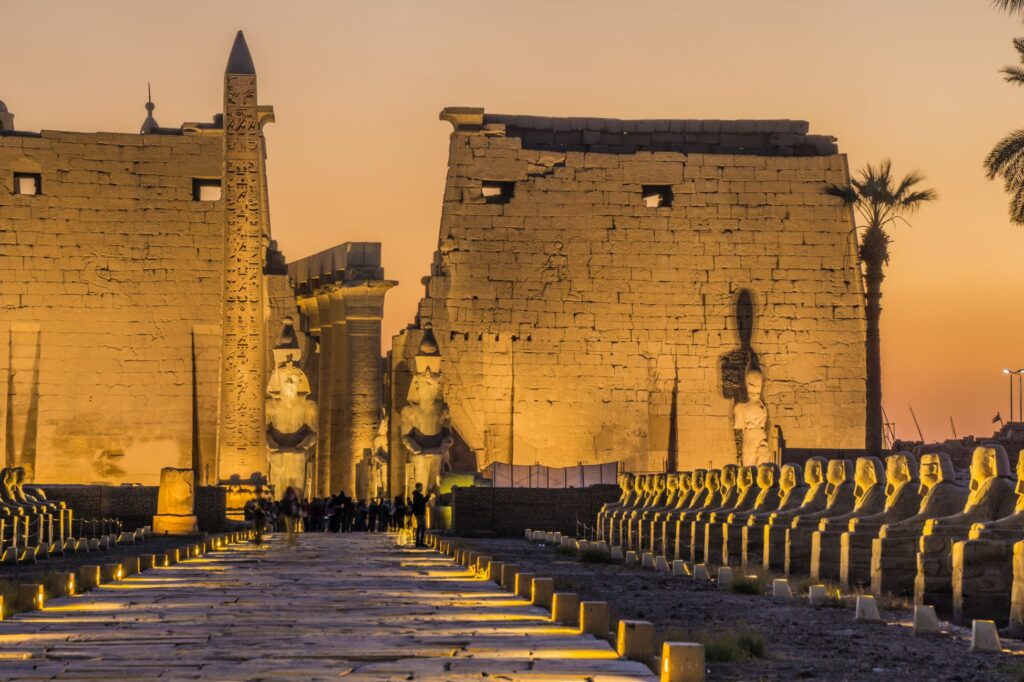
There is much to see and learn upon delving into the temple’s open-air interior. Just beyond the first pylon is the great Court of Ramses II, twin rows of papyrus capital pillars built in the name of Tutankhamun, and the Amenhotep III colonnade and Court. The temple even houses a granite shrine dedicated to Alexander the Great.
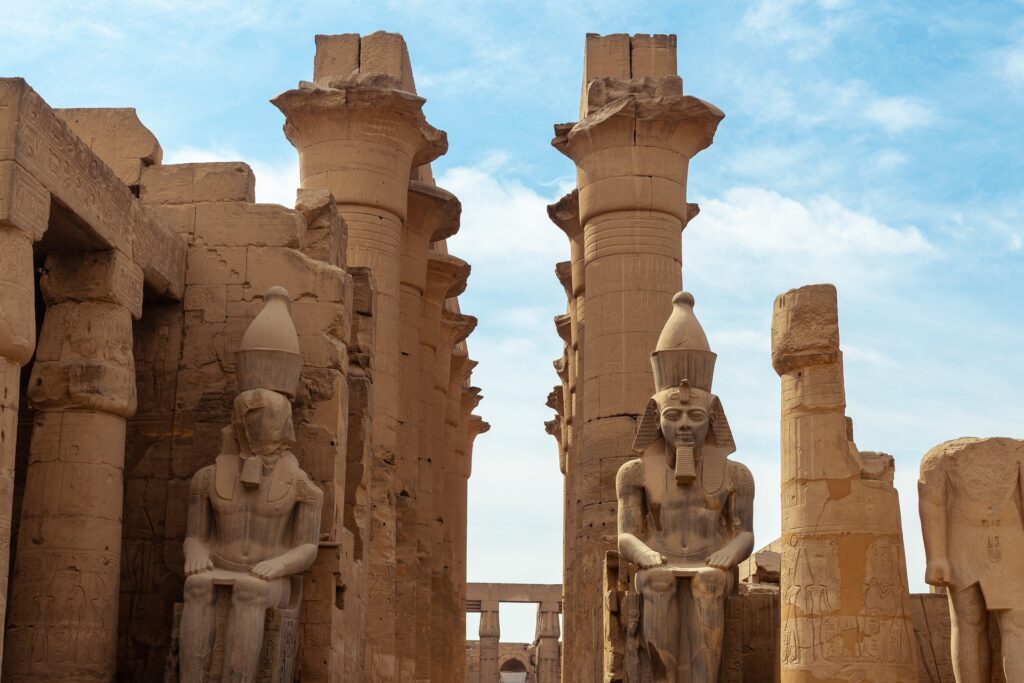
As for Luxury Gold’s VIP Experiences, these “bring their guests to the heart of a story by meeting those personally involved in the history.” This means that guests can weave freely between the temple’s columns beneath the stars, all the while listening to in-depth tales of its ancient hieroglyphics. Egyptologists even reveal inspiration from the natural world, saying that the temple’s surrounding columns “imitate bundles of papyrus reed plants.” This after-hours stroll through The Temple of Luxor, complete with a local narrating the journey, is a truly special way to experience this iconic monument.
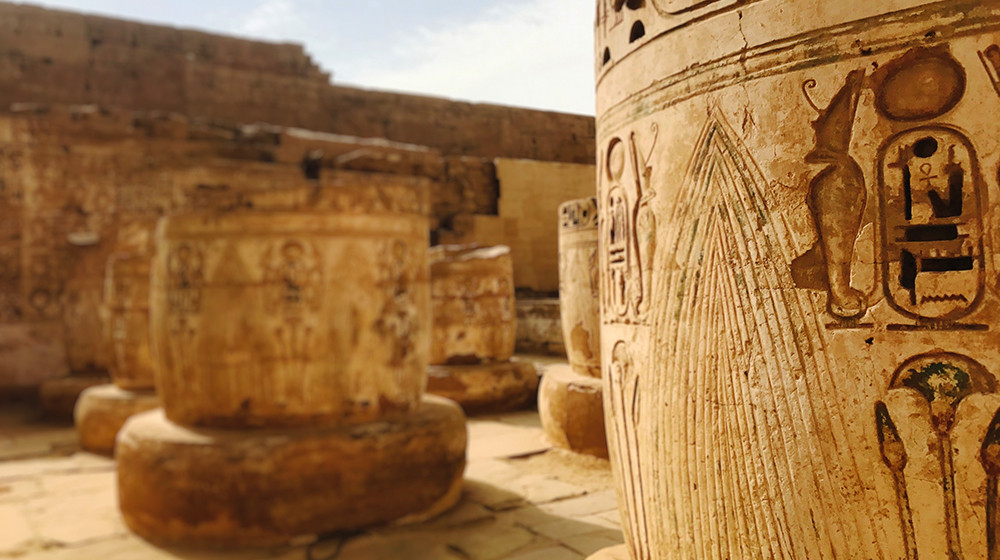
Adjacent to the Temple of Luxor, on the west bank of the Nile, Luxury Gold’s itineraries whisk guests away from where the pharaohs once stood to the very same places where these legendary figures now rest: The Valley of the Kings. Within this isolated expanse cloaked by the monstrous mountain peak Al Qurn (The Horn) lies the rock-cut tombs of approximately 63 elites from Egypt’s New Kingdom age. The tomb of Tutankhamen is the valley’s well-loved attraction, offering the chance to see the iconic pharaohs’ mummified remains up close through a climate-controlled glass display case in the original chamber.
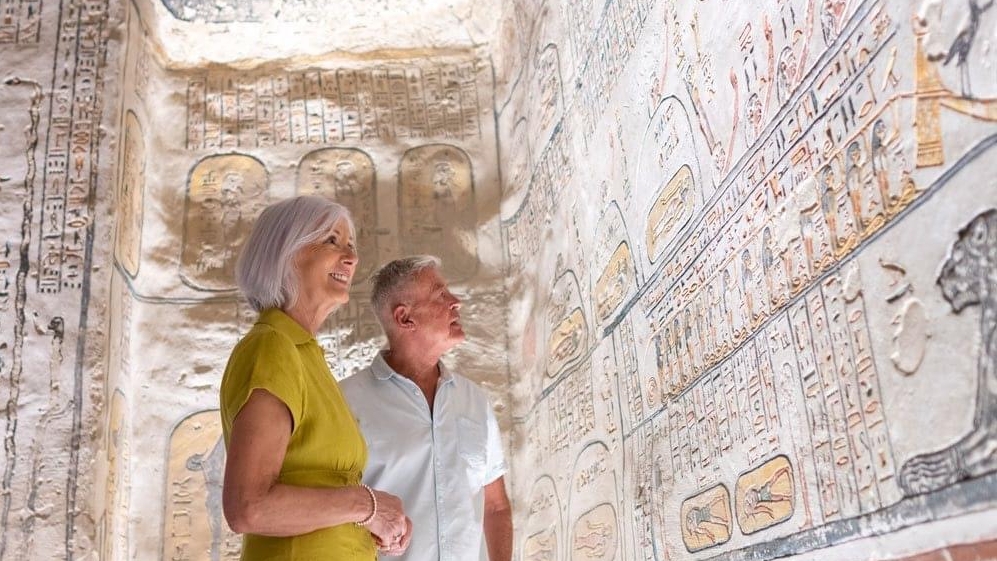
"The very thing that makes Luxury Gold’s journeys special is in the name; they’re determined to turn your travels into gold."
Rated the number one ship on the Nile by the Egyptian government, a stay onboard the all-suite River Tosca by Uniworld perfectly encapsulates experiential luxury. It is a space where one can enjoy all the comforts of a deluxe cruise ship while taking in exquisite views of Egypt’s landscapes. As the boat sails down the Nile, guests can enjoy these ever-changing surroundings while lounging around atop the sun deck, sipping on wine or bubbly and occasionally dipping their feet in the large sunken swimming pool.
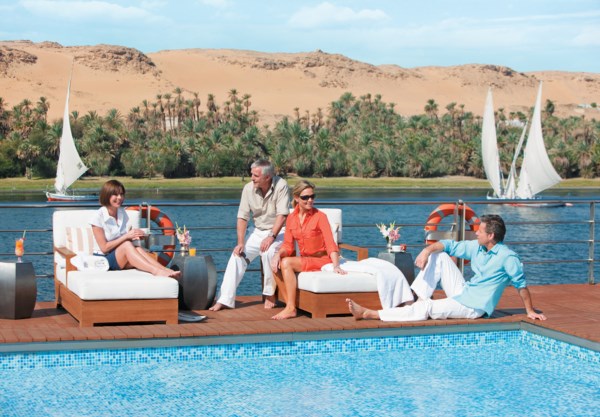
River Tosca features a stylish lounge and spacious indoor restaurant, both decorated with the essence of Egypt in mind. As the day draws to a close, guests can retreat to their suites where their object of rest, fit for a pharaoh, awaits – a double bed made up with the finest Egyptian cotton.
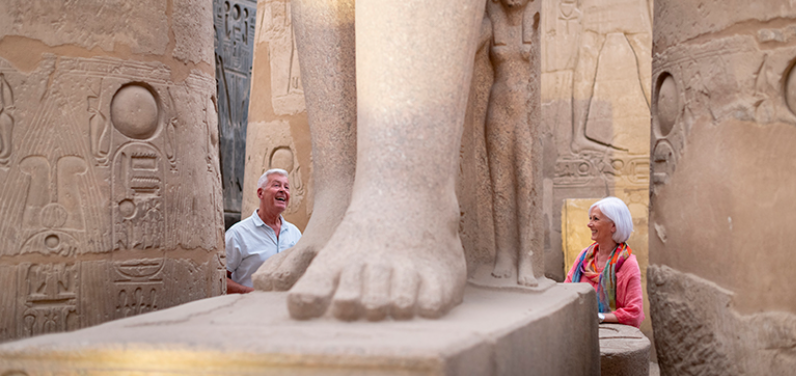
The very thing that makes Luxury Gold’s journeys special is in the name; they’re determined to turn your travels into gold. “Although the world has changed, our desire to explore and connect remains,” says Luxury Gold’s CEO Ulla Hefel Böhler. And what better way to reconnect with the world than by visiting one of its oldest ancient civilisations? The sense of adventure that accompanies these journeys in Egypt does not end when the itinerary is complete; it lingers in the mind’s eye, tempting one to return for years to come.
















